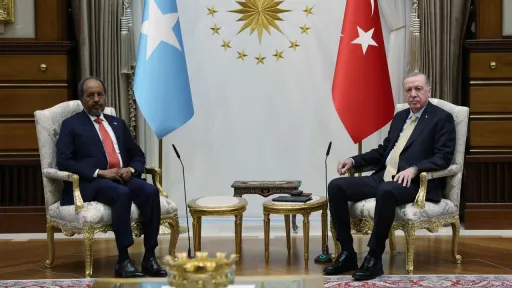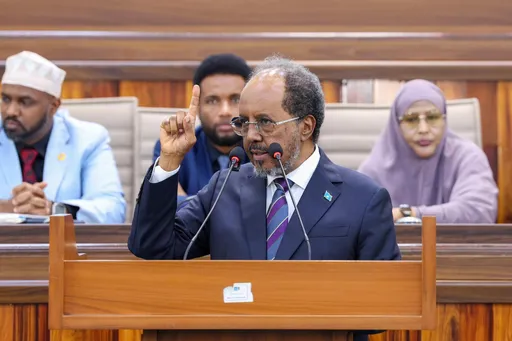By Marsden Momanyi
In 2018, I was fortunate enough to join a team of eight from three partner organisations that make up the International Gorilla Conservation Programme.
We were offered complimentary gorilla tracking passes by the Rwanda Development Board. A gorilla tracking permit costs $1,500 US dollars for visitors from outside Africa and $200 for East Africans.
We slowly made the arduous ascent up the dense mist-cloaked forest in Volcanoes National Park in search of one of the habituated gorilla families.
We carefully followed our guide who occasionally had to stop to carve a path for us through the thick, tangled undergrowth, expertly slashing away at the intertwined vines with his panga (a bladed tool used to cut away small branches and vines) as he made his way up the steep Afromontane Forest.
A chance encounter
Finally, we came to a small clearing thickly surrounded by brush and trees in all directions. Lying lazily across the ground was a group of 12 mountain gorillas in the middle of their afternoon nap.
That is all except for a massive alpha male who was quietly munching away on some bamboo twigs, which our guide told us they find intoxicatingly delicious. Two juveniles dabbled blissfully atop some tall tree stalks.
I could not help but feel somewhat small and insignificant in the presence of these much larger and stronger mammals.
The two baby gorillas paused their play and turned their attention to us, staring curiously at their strange visitors who were clicking away on their mobile phones and DSLR cameras.
One of the babies crawled further up the thin, bending stalk and pole-vaulted its body downwards to within a few feet of where our group was huddled. Our backs were against a thick wall of bush, with no escape.
Knowing all too well how protective they are of their young, each of us gently and as silently as possible backpedaled until we were huddled together. Again, our backs were against a thicket and we had nowhere else to turn.
The second baby followed suit, landing with a thud that roused one of the dozing females who craned her neck and cast a stern gaze in our direction.
There was a palpable sense of foreboding as she stood up and slowly made her way in our direction, lightly brushing against the flaps of my raincoat with her thick black fur as she sauntered past to whisk the young ones away to safety. I could hear my heart beating through my chest.
These brief moments shared with the gorillas were not just humbling, but a stark reminder of how close we came to losing these magnificent animals, which share 98 percent of our DNA, to extinction.
A remarkable recovery
Less than three decades ago, there were only about 680 mountain gorillas in the world. Today, thanks to dedicated and collaborative recovery efforts, they number over 1,000.
This is a remarkable recovery, reversing decades of decline. They are now the only ape species whose population is on an upward trajectory.
Following the steady increase in mountain gorilla numbers, in 2018, the IUCN revised their status from ‘critically endangered’ to ‘endangered’.
This success was in large part due to the collaboration and efforts of the local communities who live alongside the mountain gorillas.
“We know the value of mountain gorillas and that is why we protect and conserve them and ensure that they are safe in their habitat,” Dukundimana Joseline, a local farmer from a nearby village along the park’s edge, told our team.
“When tourists visit, the money they pay benefits the villagers through community projects.
From mountain gorilla revenues, houses have been constructed for some community members, we now have access to safe and clean water, electricity, and good roads.
Mountain gorillas are worth conserving, they have lifted us out of poverty,” she added.
'Dream come true'
“I have heard lots of beautiful stories about mountain gorillas and seeing them for the first time was like a dream come true,” said Riwe Emimah.
“The revenue from tourism has been invested in infrastructure development in our community. We now have health facilities in our villages and no longer have to trek long distances to receive treatment.
"Before, we would spend 1,500 Rwandan francs (about 1.2 US dollars) on transport but it now takes us only 15 minutes on foot to the health facility,” she said.
Another community member, Mperanya Jean Damascene attested to the upsurge in revenues from the revived tourism economy.
“In the past I would illegally enter the park to get poles to prop up my bean plants, often risking attacks and injuries from wild animals, often for a measly 500 Rwandan francs (about 40 US cents).
"Today I benefit from making and selling handicrafts and artistic furniture. A single chair fetches upwards of 15,000 Rwandan francs (about 12 US dollars) and I can now afford to meet my family's needs.”
Conservation efforts and challenges
Formed in 1991, the International Gorilla Conservation Programme (IGCP) is a unique coalition of international conservation organisations – Conservation International, Fauna & Flora International and WWF, joining forces with national and local partners to ensure the long-term survival of the now endangered mountain gorillas.
IGCP is locally owned, and it operates with global support, facilitating and advocating for mountain gorilla tourism best practices and adaptive approaches.
Despite this incredible conservation success, mountain gorillas still face enormous challenges. Conflict between people and wildlife – primarily crop raiding by buffaloes, elephants and, more rarely, gorillas – remains a challenge across the entire mountain gorilla range.
Poaching of mountain gorillas for food is extremely rare, but snares set to catch antelopes, bush pigs and other wildlife kill or injure mountain gorillas, which jeopardises the survival of this species.
In the past decades, political instability and armed conflict in parts of the region made law enforcement, monitoring and tourism development very challenging. Mountain gorillas are likely to have limited ability to adapt well to a changing climate.
Human settlements constrain their potential to disperse, and they face limitations owing to their low genetic variation and low and slow reproductive rate.
The World Species Congress aims to catalyse international momentum and support for dedicated species recovery actions and restoration efforts.
The mountain gorilla story is a powerful example of conservation impact, thanks to the sustained and dedicated efforts of rangers, park managers, local communities, and through ongoing collaborative work across the range countries.
It is hoped that the image of the playful mountain gorilla babies, etched in my memory since the day I met them, becomes the poster child for the recovery of other endangered species like them across the world.
The author is Marsden Momanyi, the head of Communication, Biodiversity at the The World Wide Fund for Nature,WWF, the leading organization in wildlife conservation and endangered species.
Disclaimer: The views expressed by the author do not necessarily reflect the opinions, viewpoints and editorial policies of TRT Afrika.
➤Click here to follow our WhatsApp channel for more stories.
























